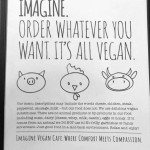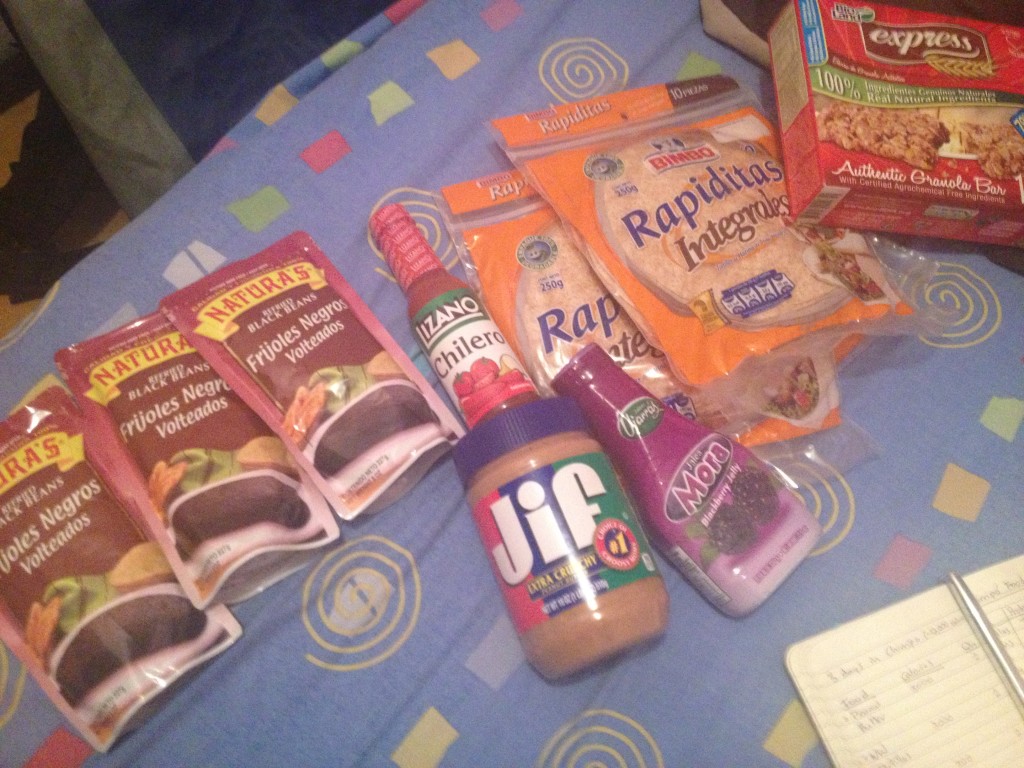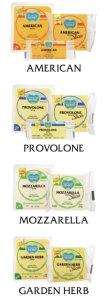July 25th, 2017
To Whom It May Concern,
Hi.
I’m Devin. I’m a vegan. We probably haven’t met, but I bet you already have a lot of preconceived notions about who I am or how I’d dine in your restaurant. I just want to say right off the bat, I’m one of the less annoying ones (at least I’d like to think).
I’m not writing you to yell, or castigate you for serving meat in your restaurant, or because I’m planning some demonstration in your dining room.
No, I am simply writing you to ask that you please include just ONE vegan option on your menu, and that you label it as such. That would do me a real solid 🙂
Let me explain.
See, most vegans, despite all the jokes, actually just want to live a normal life. And a BIG part of normal life, for many people at least, is the ability to dine out with friends, family, and coworkers.
But you are making that very hard for me. Let me share an example.
For work, my team and I are often in situations of dining out together. It might be on a work trip, or when the other half of my team is in town for an offsite together.
Quite often the task of finding a restaurant comes down to either myself or my coworker (who is not vegan). Today I had the task of picking a restaurant for our next offsite, held near HQ, in San Francisco.
When most people find out I am vegan and live in San Francisco they ask, “is SF just the best place ever for vegans?!”
I used to say yes, because we do have a lot of dedicated vegan restaurants. Which is GREAT. Seriously, as a vegan the joy of going to a restaurant where I can order anything off the menu and don’t have to ask ANY follow up questions is like, unreal.
But after searching for nearly an hour today for a restaurant that just had vegan options I decided this city sucks for vegans and is no better than any other. It was nearly impossible to find a single restaurant with a vegan item on the menu!
There were plenty of places with veggie based side dishes, but cmon — I’m like, 6 feet tall. I’m supes tall. Sides won’t cut it. Plus, nearly all of the veggie sides have cheese!
Ok, no big deal, just say “no cheese please.” But then they might be cooked in butter, so you have to say “how is that prepared?” and cross your fingers they say it’s cooked with oil. If they say “sautéed in butter” then you have to say “can you please cook that in oil?”
Now you’ve had to have a significant back and forth and look like a complete weirdo, all just to get a stupid SIDE of vegetables. Hardly a meal.
“Well how about the salad?” you say. Most places have a salad on the menu.
True, but nearly all of them come with meat. So then you have to say “no meat please.” Oh and they have cheese, like, ALL OF THEM. This is America, what’s a salad without meat and cheese?
“No cheese please.”
“Ok anything else sir?”
“Yeah… I see you have a nice fancy dressing on that… how is that prepared?”
“Well we start with full fat yogurt –”
“Ok, no dressing.”
So now you have a plate of raw, undressed vegetables, and a side dish of oily sauteed vegetables, and you had to WORK FOR IT. And did I mention I’m like, really tall?
While all of this has been going on, your dining partners have been sitting there rolling their eyes thinking “there goes the vegan, gawd they just can’t shut up about it can they??”
Or, potentially worse, they are doting on your every need, desperately making sure you have something to eat. A nice sentiment but all the more embarrassing as a fully grown adult who made a choice to eat this way anyway.
“Yes, I have something to eat. No, I don’t need your help or attention. I’M SO TALL I’M LIKE A REAL ADULT.”
[In my experience, most people want to talk about me being vegan way more than I want to talk about me being vegan! I actually really dislike talking about it unless the person is genuinely interested in trying it themselves.]
So your menu that you thought was accommodating to vegans is actually a lot of work and leaves me, a real live grown adult human with a plate of raw leaves and a few asparagus spears.
You’ve made me feel like an outcast, and required me to make a million special requests just to try to feel some semblance of normalcy in the dining out process. Everyone else just got to say “that. I’ll have that.” I had to have a lengthy conversation to get my rabbit food.
We could just pick a 100% vegan restaurant, and, bless their hearts, my coworkers often choose that for me. But it always makes me feel uncomfortable too! (Not to mention my coworkers will smile and say “it was great,” and then go order 20 chicken wings and eat them in their hotel room, making me feel terrible)
It makes me feel like I am forcing my choices on someone else just because of you, yes YOU restauranteurs that can’t just HOOK ME UP and put ONE ITEM on your menu with a little (v) next to it so I can rest easy, ask your waitstaff ZERO questions, and move onto the real point of getting together at a table over food with other humans: conversing.
The thing is most restaurants WILL accommodate a vegan if you just ask. Most chefs will happily prepare you something vegan if you ask. Please just save us all that step and write it on your menu so I can just say “that. I’ll have that.”
And hey, with the growing trend toward more plant-based eating you may just be surprised at how often it gets ordered!
Sincerely,
Devin the Vegan




